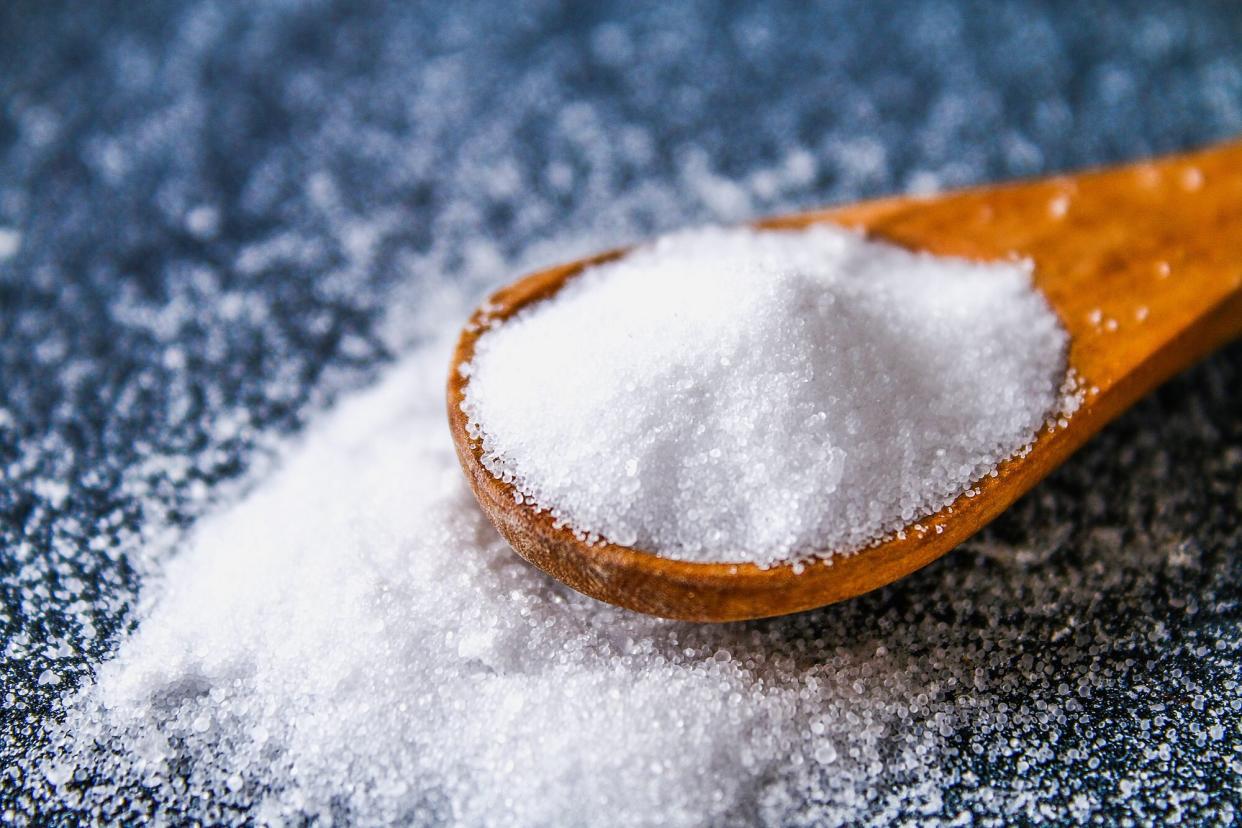4 Ways to Fix a Dish That Is Too Salty—Plus, How to Make Sure You Don't Over-Season Your Food Ever Again

GETTY IMAGES
We've all been there: Whether you forgot you already salted a dish and added the salt again or your hand slipped and you just included too much, the result is the same. Your soup, stew, meat, side, or sauce is now too salty. So, how can you fix it so you can still serve the dish for dinner? We're sharing four time-honored ways to bring the balance back—and our best tips to help you season your food properly every time.
Related: 5 Easy Ways to Thicken Chili
How to Fix a Too-Salty Dish
Add an Acidic Ingredient
It won't reduce the sodium level of your dish, but adding an acidic ingredient, such as lemon juice, vinegar, or even a tomato product, can neutralize the saltiness of a dish. Start with a dash or a squeeze, stir well to combine, and give it a taste before adding any more.
Try to choose an acidic element that will mesh well with the flavor profile of your dish—for example, you'd use lime juice for carnitas, not balsamic vinegar. When in doubt, use a neutral-tasting acid like rice vinegar or white wine vinegar; these are compatible with a lot of different dishes.
Add a Sweetener
Similarly, try adding a touch of sweetness to counteract a too-briny sauce or stir-fry. Brown sugar or maple syrup will add a distinctive caramel-y flavor to your dish, which might work well. If a more neutral sweetness is desired, stick with granulated sugar.
Add Dairy
A creamy dairy product will coat your mouth, essentially tricking your palate. Heavy cream, half-and-half, or a pat of butter are good solutions for a dish that needs to simmer for a little longer. Add sour cream or a knob of cream cheese at the end and off the heat source to prevent them from breaking.
Dilute or Bulk Up Your Dish
Diluting your dish with a splash or two of salt-free liquid or adding more vegetables, pasta, or meat, will help a dish that's too salty simply because you are increasing the overall amount of whatever you're making. Instead of just masking the salt like the tricks above, this will actually reduce the sodium per portion of your dish—so it's a good route to take if you have dietary concerns.
The Potato Trick
Legend says that if you toss a raw, peeled, and diced potato into a pot of simmering soup or stew, it will absorb some of the salt as it cooks. While there is some merit to this, we think this old trick should be taken with a grain of salt (pun intended). In reality, the potato will absorb liquid because it is so starchy, but it will have a very subtle effect on the final salt level of the dish.
There's no harm in trying this method if you have an extra potato on hand. Keep in mind that it's more likely that the extra water you will need to add after the potato absorbs some of the liquid will help more than the spud itself.
How to Prevent Adding Too Much Salt to a Dish
When it comes to over-salting a dish, an ounce of prevention really does beat a pound of cure. It's always going to be easier to add more salt than it will be to take it out. Keep these guidelines in mind before you start cooking.
Season in Layers
In culinary school, chefs in training are taught to season in stages in order to enhance each layer of flavor you are building. For instance, if you are sautéing onions for a soup or sauce, add a couple of small pinches of salt before you move on to the next step.
Be Aware of Hidden Sodium
At the store, choose products that advertise that they are lower in sodium than their counterparts. Broth, beans, and tomato products can contain loads of salt, which will mean you will end up having less control over how something tastes.
Taste as You Go
This can't be stressed enough: Taste your food while you're cooking! If you follow the tips above and season in layers, you'll be able to pull back or add more depending on how your dish tastes at any given moment.
Pick a Salt and Stick With It
There are all kinds of salts available that vary in flake size, which means their flavor varies, too. Here's the perfect example: Because table salt is dense, it is twice as salty as kosher salt. If you get comfortable with using the same kind of salt, you are much more likely to know exactly how much "a pinch" will affect your food. Many professional chefs reach for kosher salt when cooking—the coarser flakes are easier to grip and it dissolves quickly.

